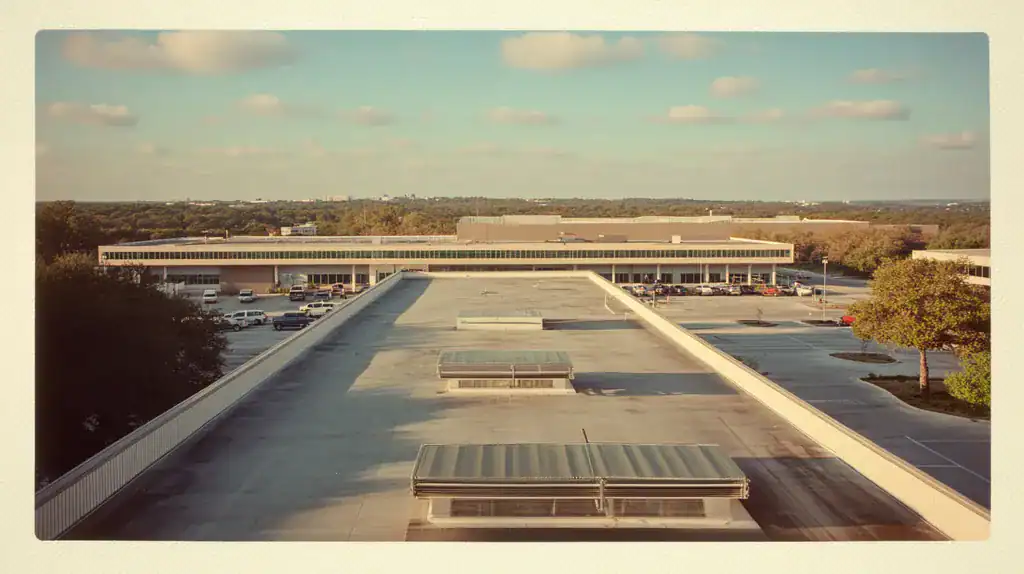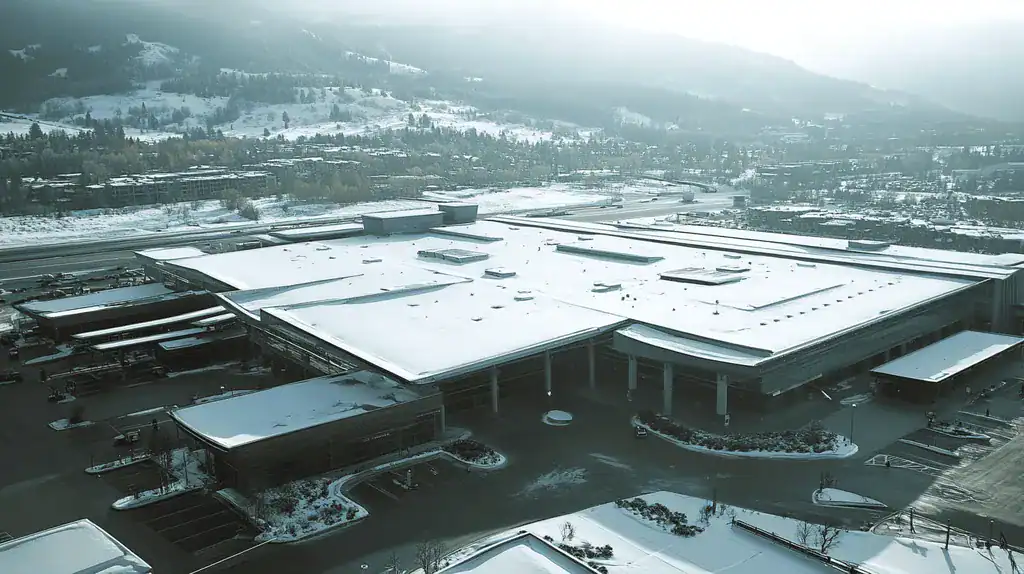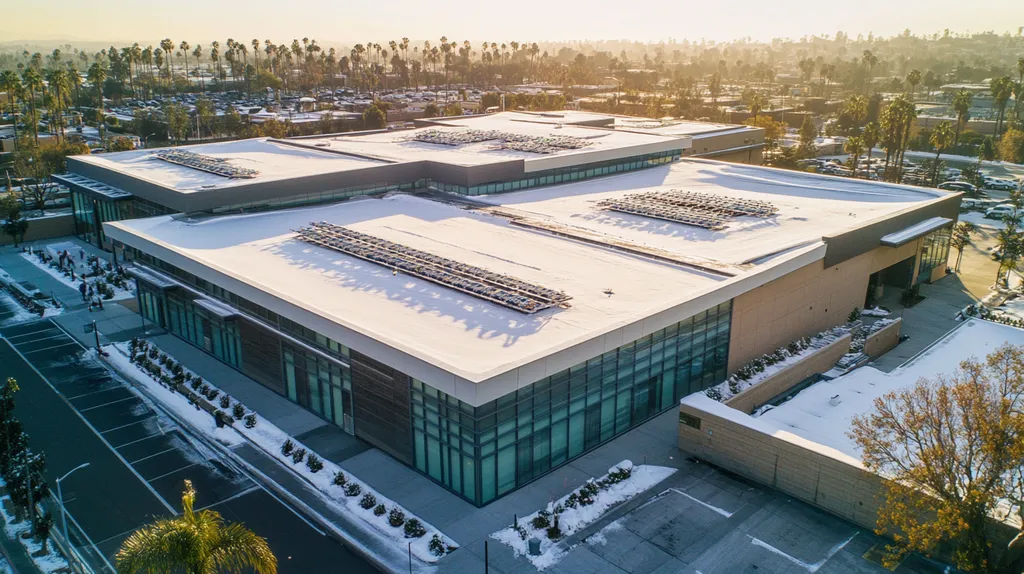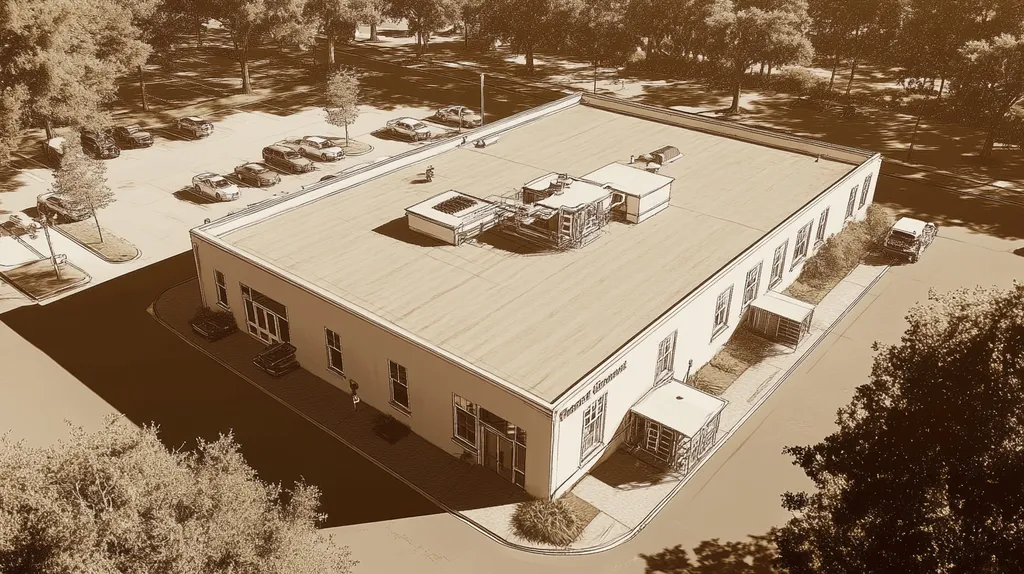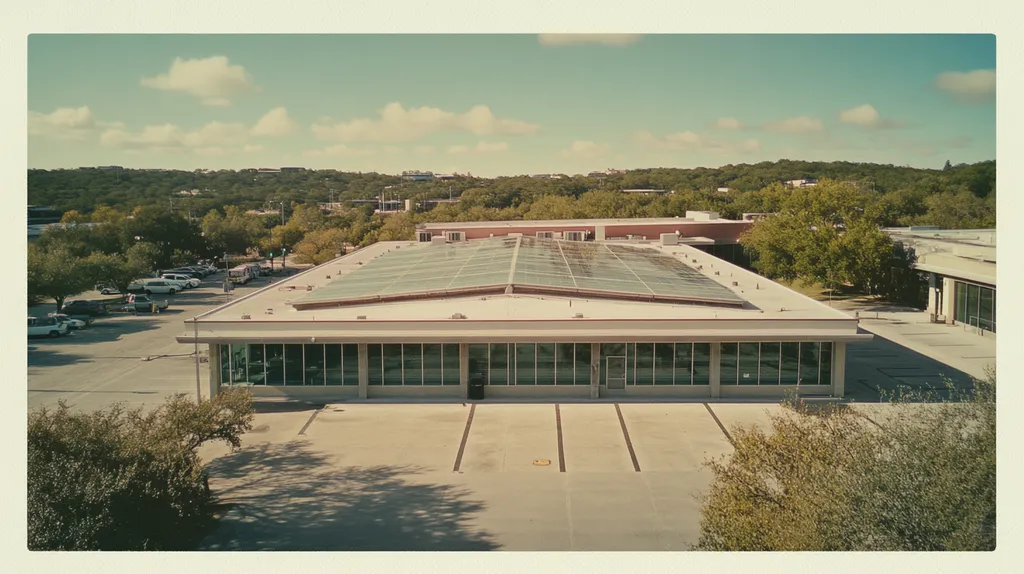Commercial roof warranties leave building owners exposed to millions in unexpected costs each year, with over 60% of claims denied due to misunderstandings about coverage requirements and limitations.
From maintenance oversights that void protection to critical gaps between manufacturer and workmanship warranties, the complexity of roofing guarantees creates dangerous financial exposure for property owners.
This comprehensive guide examines common warranty misconceptions, explores their costly implications, and provides evidence-based strategies for maximizing warranty protection through proper documentation, testing, and maintenance.
SECTION 1: COMMON MISCONCEPTIONS
When it comes to commercial roofing warranties, what you don’t know can cost you dearly. Industry data shows that over 60% of warranty claims are denied due to misunderstandings about coverage scope and requirements. Building owners frequently discover these gaps in protection only after experiencing a costly roof failure, leaving them exposed to substantial unexpected repairs.
Misunderstanding the Scope of Roofing Warranties
Commercial roof warranties rarely provide the comprehensive protection many owners assume. Most warranties contain specific exclusions for common issues like ponding water, unauthorized repairs, or damage from foot traffic.
Coverage typically depends on strict maintenance requirements that many owners overlook. Missing a single annual inspection or failing to document repairs can void warranty protection entirely.
Material warranties often exclude labor costs for repairs or replacement. A $50,000 material warranty might only cover $15,000 in actual materials, leaving owners responsible for the remaining labor expenses.
Weather-related exclusions present another significant gap. Most warranties exclude damage from high winds, hail, or other severe weather events that exceed specified thresholds.
Confusing Manufacturer and Workmanship Warranties
The distinction between manufacturer and contractor warranties creates critical coverage gaps. Manufacturer warranties typically only cover material defects, while workmanship warranties address installation quality.
When problems arise, determining whether the issue stems from defective materials or poor installation becomes crucial. This often leads to finger-pointing between manufacturers and contractors, delaying necessary repairs.
Workmanship warranties generally expire much sooner than manufacturer warranties. While material coverage might extend 20 years, installation coverage typically ends after just 2-5 years.
Transfer requirements add another layer of complexity. Many warranties become void when building ownership changes unless specific procedures are followed.
Belief That Warranties Cover All Roof Issues
The most dangerous misconception is that warranties eliminate all financial risk. Regular maintenance, repairs from accidental damage, and addressing normal wear and tear remain the owner’s responsibility.
Even covered issues may require significant owner participation. Most warranties mandate that owners pay for inspections to verify claims and may require multiple repair attempts before replacement is authorized.
Environmental factors often fall outside warranty coverage. Damage from chemical exposure, nearby construction work, or modifications to rooftop equipment typically voids protection.
Emergency temporary repairs can compromise coverage. Unless owners follow specific procedures and use approved contractors, even minor emergency fixes may invalidate their warranty.
SECTION 2: PRACTICAL IMPLICATIONS
Commercial roof warranties represent a critical yet frequently misunderstood aspect of building management. Studies show that warranty-related decisions impact up to 85% of total roof lifecycle costs. When property owners misinterpret warranty terms or overlook crucial maintenance requirements, they risk both immediate repair expenses and long-term structural integrity. Understanding these practical implications is essential for protecting your roofing investment and avoiding costly mistakes.
Impact of Warranty Misinterpretation on Maintenance Decisions
Warranties are limited and often misunderstood, typically covering only specific types of defects and damages. Many property owners assume comprehensive protection when exclusions are actually common, leading to inadequate maintenance planning. (source: AKVM Roofing Blog)
Regular maintenance requirements specified in warranties often go unheeded. Simple tasks like debris removal, drainage cleaning, and surface inspections get postponed or ignored, potentially voiding warranty coverage.
Property owners frequently overlook documentation requirements. Without proper records of inspections and repairs, even legitimate warranty claims may be denied.
The misconception that warranties eliminate maintenance needs can result in accelerated deterioration. Minor issues left unaddressed often escalate into major problems requiring extensive repairs.
Consequences of Overlooking Workmanship Warranty Importance
Installation quality directly impacts long-term roof performance. Poor workmanship can compromise even the highest-quality materials, leading to premature system failure.
Most material warranties exclude damage caused by improper installation. Without adequate workmanship coverage, owners face substantial repair costs for installation-related issues.
Time limits on workmanship warranties create critical coverage gaps. Problems often surface after workmanship warranty expiration but before material warranty ends.
Contractor selection becomes paramount when considering workmanship coverage. The strongest material warranty offers little protection against installation defects.
Effects of Inadequate Warranty Awareness on Roof Longevity
Lack of warranty understanding frequently leads to shortened roof lifespans. Owners may unknowingly void coverage through unauthorized modifications or repairs.
Preventive maintenance opportunities are often missed due to warranty confusion. Regular inspections and minor repairs can extend roof life significantly when properly documented.
Emergency repairs present particular risks when warranty terms are unclear. Using unauthorized contractors or materials for urgent fixes can invalidate remaining coverage.
The cumulative impact of warranty misunderstandings affects both performance and cost. A properly maintained roof under warranty protection can last 20-30% longer than one with compromised coverage.
SECTION 3: COST OF MISINFORMATION
Misunderstanding commercial roof warranties creates a dangerous financial liability for property owners. Industry data reveals that warranty-related oversights lead to an average of $2.40 per square foot in unnecessary repair costs annually. These expenses compound over time, often resulting in premature roof replacement that can cost hundreds of thousands of dollars. Understanding the true cost implications of warranty misinformation is crucial for protecting your roofing investment.
Financial Risks from Assuming Full Coverage Warranties
Manufacturer roofing warranties typically cover only material defects, while workmanship warranties specifically address installation quality. This critical distinction often catches property owners off guard when problems arise. (source: Peak to Peak Roofing)
When warranty claims are denied due to misunderstood coverage limitations, owners face unexpected out-of-pocket expenses. These costs frequently exceed original budget allocations by 300% or more.
Weather-related damage presents particular financial exposure, as most warranties exclude severe weather events. Without proper understanding, owners may delay necessary preventive measures, leading to catastrophic failures.
Documentation requirements create another costly pitfall. Missing maintenance records or unauthorized repairs can void warranty protection entirely, leaving owners fully exposed to replacement costs.
Expense of Premature Roof Replacement Due to Misguided Repairs
Poor repair decisions based on warranty misunderstandings accelerate roof deterioration. What begins as a minor leak can escalate into structural damage requiring complete replacement when warranty terms aren’t properly followed.
Using unauthorized contractors or materials voids many warranties instantly. This common mistake forces owners to bear the full cost of subsequent repairs and often leads to premature system failure.
Temporary fixes that don’t address underlying issues compound damage over time. These band-aid solutions typically cost 3-4 times more in the long run compared to proper repairs.
The cumulative effect of misguided repairs often necessitates replacement years before the expected end of service life. This acceleration can double or triple lifetime ownership costs.
Hidden Costs of Neglecting Regular Roof Inspections
Skipping mandated inspections invalidates warranty protection while allowing minor issues to develop into major problems. Regular professional inspections typically cost less than 1% of roof replacement value annually.
Undetected problems like moisture infiltration or membrane separation progress rapidly without intervention. These issues often double in severity and repair cost every six months they go unaddressed.
Energy efficiency suffers when inspection requirements are ignored. Compromised insulation and water damage can increase heating and cooling costs by up to 40%.
The cost impact extends beyond direct repairs to potential business disruption and tenant dissatisfaction. Water damage from undetected leaks frequently leads to lost revenue and damaged relationships with building occupants.
SECTION 4: REALITY CHECK
Commercial roofing decisions carry significant financial implications, with warranty misunderstandings leading to over $1.2 billion in denied claims annually. Despite investing in premium roofing materials and professional installation, many building owners discover critical gaps in their warranty protection only after problems emerge. Understanding the interplay between material defects, installation quality, and warranty coverage is essential for protecting your roofing investment and avoiding costly disputes.
Differentiating Material Defects from Installation Faults
A commercial roofing system faces continuous exposure to elements and stress from the moment of installation. Problems can develop gradually, making it crucial to identify whether issues stem from defective materials or improper installation. (source: Hershey Exteriors)
Material defects typically manifest as systematic failures across large roof sections. These include premature membrane degradation, blistering, or separation of factory-sealed seams.
Installation faults present different patterns, often appearing as localized problems. Common indicators include improper flashing, inadequate slope for drainage, or inconsistent seam quality.
Accurate diagnosis requires detailed documentation from initial installation through regular inspections. Without this trail of evidence, warranty claims become difficult to pursue regardless of the underlying cause.
Limitations and Exclusions in Typical Roofing Warranties
Standard warranty documents contain specific triggers that can void coverage instantly. These often include unauthorized roof modifications, failure to maintain proper drainage, and damage from building settling.
Most warranties exclude damage from standing water after 48-72 hours. This creates particular risk in low-slope commercial roofs where drainage problems frequently develop.
Chemical exposure from HVAC equipment, kitchen exhausts, or industrial processes typically falls outside warranty protection. Even minor chemical damage can compromise the entire roofing system.
Time-based exclusions create additional vulnerability. While material warranties might extend 20 years, critical components like flashings or sealants often carry much shorter coverage periods.
Necessity of Dual Warranties: Manufacturer and Installer
Comprehensive protection requires both manufacturer and installer warranties working in tandem. Material warranties alone leave building owners exposed to workmanship-related failures that often emerge years after installation.
Installer warranties should specifically address application quality and detail work. This includes proper substrate preparation, seam welding, and integration with building components.
The coordination between warranties becomes critical during claim situations. Clear documentation of both material specifications and installation procedures helps prevent finger-pointing between parties.
Long-term performance depends on maintaining both warranty types in active status. This requires careful attention to inspection schedules, maintenance requirements, and proper documentation of all roof-related activities.
SECTION 5: EVIDENCE-BASED ALTERNATIVES
Commercial roof warranties represent a critical investment protection mechanism that fails nearly 40% of building owners due to preventable oversights. Industry data shows that proper contractor selection, maintenance protocols, and warranty documentation can reduce unexpected roofing costs by up to 75% over a roof’s lifespan. Understanding and implementing these evidence-based alternatives helps property owners maximize warranty protection while minimizing financial exposure.
Selecting Contractors with Verified Workmanship Guarantees
Manufacturer roofing warranties typically cover only material defects, while workmanship warranties specifically address installation quality. This distinction proves crucial when problems emerge, as proper installation directly impacts long-term performance. (source: Peak to Peak Roofing)
Verified workmanship guarantees should include specific performance metrics and response timeframes. The strongest guarantees cover both labor and materials for repairs related to installation quality.
Contractor certification programs provide an additional layer of quality assurance. These programs require ongoing training, quality audits, and demonstrated expertise with specific roofing systems.
Documentation of past warranty claim resolution offers valuable insight into contractor reliability. The most dependable contractors maintain detailed records of warranty-related repairs and can demonstrate successful resolution patterns.
Importance of Regular Roof Maintenance to Sustain Warranty Validity
Preventive maintenance programs represent the most cost-effective strategy for protecting warranty coverage. Regular inspections typically cost less than 3% of roof replacement value annually while preventing up to 90% of premature failures.
Professional maintenance contracts should align directly with warranty requirements. These agreements ensure all required inspections, cleaning, and minor repairs occur on schedule and with proper documentation.
Emergency response protocols must integrate with warranty provisions. Establishing these procedures in advance prevents rushed decisions that could compromise warranty coverage during urgent situations.
Data-driven maintenance tracking helps identify developing issues before they escalate. Modern inspection technologies can detect moisture infiltration and membrane degradation long before visible damage appears.
Utilizing Warranty Documentation to Guide Roof Management
Comprehensive warranty documentation serves as the foundation for effective roof management. This documentation should detail specific maintenance requirements, approved repair methods, and claim procedures.
Digital tracking systems streamline warranty compliance monitoring. These platforms can automatically schedule required inspections, document completion, and maintain repair histories.
Integration of warranty requirements into facility management protocols ensures consistent compliance. Clear communication channels between maintenance staff, contractors, and warranty providers help prevent coverage-voiding mistakes.
Regular warranty audits identify potential coverage gaps before problems occur. These reviews should examine both current maintenance practices and upcoming warranty milestones that may require specific actions.
SECTION 6: TEST AND VERIFY
Modern commercial roofing systems represent investments worth millions of dollars, yet 70% of premature failures stem from undetected issues that regular testing could have prevented. While most building owners understand the importance of maintenance, many lack the systematic verification processes needed to protect their warranty rights and prevent catastrophic failures. Implementing a comprehensive testing and verification program combines traditional inspection methods with cutting-edge monitoring technologies to detect and document potential problems before they escalate.
Conducting Routine Professional Roof Inspections
Professional roof inspections serve as the foundation of any effective maintenance program. These evaluations should occur at least twice annually – typically in spring and fall – with additional inspections following severe weather events or major rooftop work.
Inspectors must systematically examine all critical components including membrane condition, seam integrity, flashings, drainage systems, and penetrations. Even minor deficiencies can indicate developing problems that could compromise warranty coverage.
Documentation from these inspections creates a vital record of roof condition over time. Photos, detailed notes, and measurement data provide essential evidence for tracking degradation patterns and supporting potential warranty claims.
Building owners should require inspectors to use standardized assessment protocols and reporting formats. This consistency helps identify trending issues and ensures all warranty-mandated inspection points receive proper attention.
Employing Leak Detection and Roof Monitoring Technologies
Advanced detection systems now offer unprecedented insight into roof performance. Electronic leak detection can pinpoint moisture infiltration before visible damage occurs, while infrared scanning reveals hidden wet insulation and thermal anomalies.
Continuous monitoring systems provide real-time alerts about potential problems. Sensors tracking moisture levels, membrane strain, and environmental conditions help facility managers address issues promptly before warranty coverage is compromised.
Integration of monitoring data with maintenance records creates powerful diagnostic capabilities. This combined information helps distinguish between material defects, installation issues, and maintenance-related problems – critical distinctions for warranty claims.
Regular calibration and testing of monitoring equipment ensures accuracy and reliability. False readings or missed alerts can create dangerous blind spots in roof oversight.
Validating Warranty Claims through Thorough Documentation and Testing
Successful warranty claims depend on comprehensive documentation of all roof-related activities. This includes maintenance records, repair histories, modification details, and test results from initial installation through current conditions.
Laboratory analysis of material samples often proves crucial for warranty disputes. Testing can verify whether failures stem from manufacturing defects, installation errors, or external factors – distinctions that determine warranty coverage.
Chain of custody documentation must track all roof samples and test materials. Missing or compromised evidence can invalidate otherwise legitimate warranty claims.
Professional engineers or certified roof consultants should review test results and documentation before submitting major warranty claims. Their expertise helps present technical evidence effectively and counter potential claim denials.
The Bottom Line
With over $1.2 billion in denied warranty claims annually, commercial roof protection requires immediate action from building owners and facility managers.
The evidence is clear: 60% of warranty claims fail due to preventable documentation and maintenance oversights, while proper testing and verification programs can reduce unexpected roofing costs by up to 75%.
Success depends on implementing dual manufacturer-contractor warranty coverage, maintaining rigorous inspection schedules, and leveraging modern monitoring technologies to detect issues before they escalate.
Building owners who take proactive steps to understand and properly maintain their warranty protection can extend roof lifespans by 20-30% while avoiding the catastrophic costs of premature system failure.
FREQUENTLY ASKED QUESTIONS
Q. What are common misconceptions about commercial roof warranties?
A. Many owners believe their warranties cover all issues, but exclusions are common. Most warranties have specific maintenance requirements that, if overlooked, can void coverage. Understanding these exclusions helps in avoiding costly repairs later.
Q. How does a warranty misunderstanding impact commercial roof maintenance?
A. Misunderstanding warranties can lead to inadequate maintenance planning. Owners often neglect required tasks, believing their coverage is more comprehensive than it truly is. This can result in costly repairs or early roof replacement due to accelerated deterioration.
Q. What financial risks are associated with commercial roof warranty misconceptions?
A. Assuming full coverage can lead to unexpected expenses. When claims are denied due to misconceptions, owners might face substantial repair costs. These expenses can quickly exceed budget estimates, creating a significant financial burden.
Q. How can building owners differentiate between material and workmanship warranty issues?
A. It’s crucial to identify whether a problem arises from material defects or poor installation. Documenting installation processes and regular maintenance helps distinguish these two issues, ensuring appropriate claims can be filed.
Q. What are evidence-based alternatives for maximizing commercial roof warranties?
A. Selecting reputable contractors and adhering to maintenance protocols enhances warranty protection. Keeping thorough documentation serves as evidence for claims and helps identify potential issues before they escalate into expensive repairs.
Q. What steps can ensure effective testing and verification for commercial roofs?
A. Conducting routine professional inspections and employing advanced monitoring technologies is essential. These practices help detect issues early and provide necessary documentation for warranty claims.
Q. How does the choice of materials impact commercial roof warranties?
A. The materials used significantly affect warranty coverage. High-quality materials typically come with longer warranties. However, understanding warranty terms and maintenance requirements is essential to maximize their lifespan and effectiveness.

